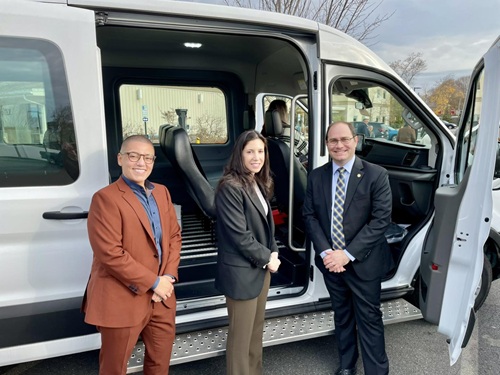The Nevada Department of Transportation and contractor Mead & Hunt are working to develop a “multiple property documentation form” or MPDF to help preserve Latino-related properties statewide, with a primary focus on the cities of Las Vegas and Reno.
[Above image via the Nevada DOT]
“This is an exciting new project that will pave the way for similar DOT projects throughout the country to preserve the rich cultural fabric of our communities across Nevada,” explained Cliff Creger, Nevada DOT’s chief of cultural resources, in a statement. “We are seeking input from the public on the important people and places to northern and southern Nevada’s Latino communities.”
He added that the resulting MPDF from that outreach seeks to reflect the way the Latino community defines the importance and use of properties. It also would cover how such properties are directly associated with Latino “themes” as well as their chronological periods in the historic contexts and/or which physical features convey distinctive design features.
The goal of the project is to build relationships within the Latino community, integrate the outreach findings and program into the MPDF, then develop a historical context for future transportation projects in Nevada.
This project also aims to “understand, explore, and propose criteria” to improve the “evaluation eligibility” of historical properties based on the Latino community’s unique past, standards, and values, the agency added.
“We understand that the architectural history representation of the Latino culture is unique to its own past and can be understood from its own standards and values,” Creger noted.
This particular cultural outreach project undertaken by Nevada DOT is reflective of similar efforts by state departments of transportation nationwide.
For example, the Colorado Department of Transportation debuted a documentary called “Durango 550 – Path of the Ancestral Puebloans” in January to show how the agency worked with archaeologists and regional Native American tribes to document, study, and ultimately share the discoveries unearthed near Durango in southwest Colorado.
That particular archaeological excavation took place in 2018 and 2019 ahead of construction on the US 550-US 160 Connection South project in 2020.
“This documentary shows the unique collaboration of all entities involved, laying the groundwork for a new approach to archaeology, blending western science with traditional cultural beliefs,” explained Greg Wolff, a Colorado DOT archaeologist, in a statement.
In July 2021, the Ohio Department of Transportation helped open the new 54-mile-long Quaker Heritage Scenic Byway that seeks to foster a “new awareness” of cultural and historical diversity in rural southwest Ohio with stops along the way telling the story of Quakers who migrated to the region from the late 18th to the late 20th centuries.
That project helped reveal numerous layers of local history such as Quaker interactions with Native American communities, agriculture and land use, abolitionism, and religious practices – all identified through historical research, digital mapping, and told through “interactive” narratives.
Finally, the latest episode of the Environmental Technical Assistance Program or ETAP Podcast discussed ways state DOT cultural resources programs are exploring to identify and preserve homes built in the 30 years following World War II that may have potential historical significance.




